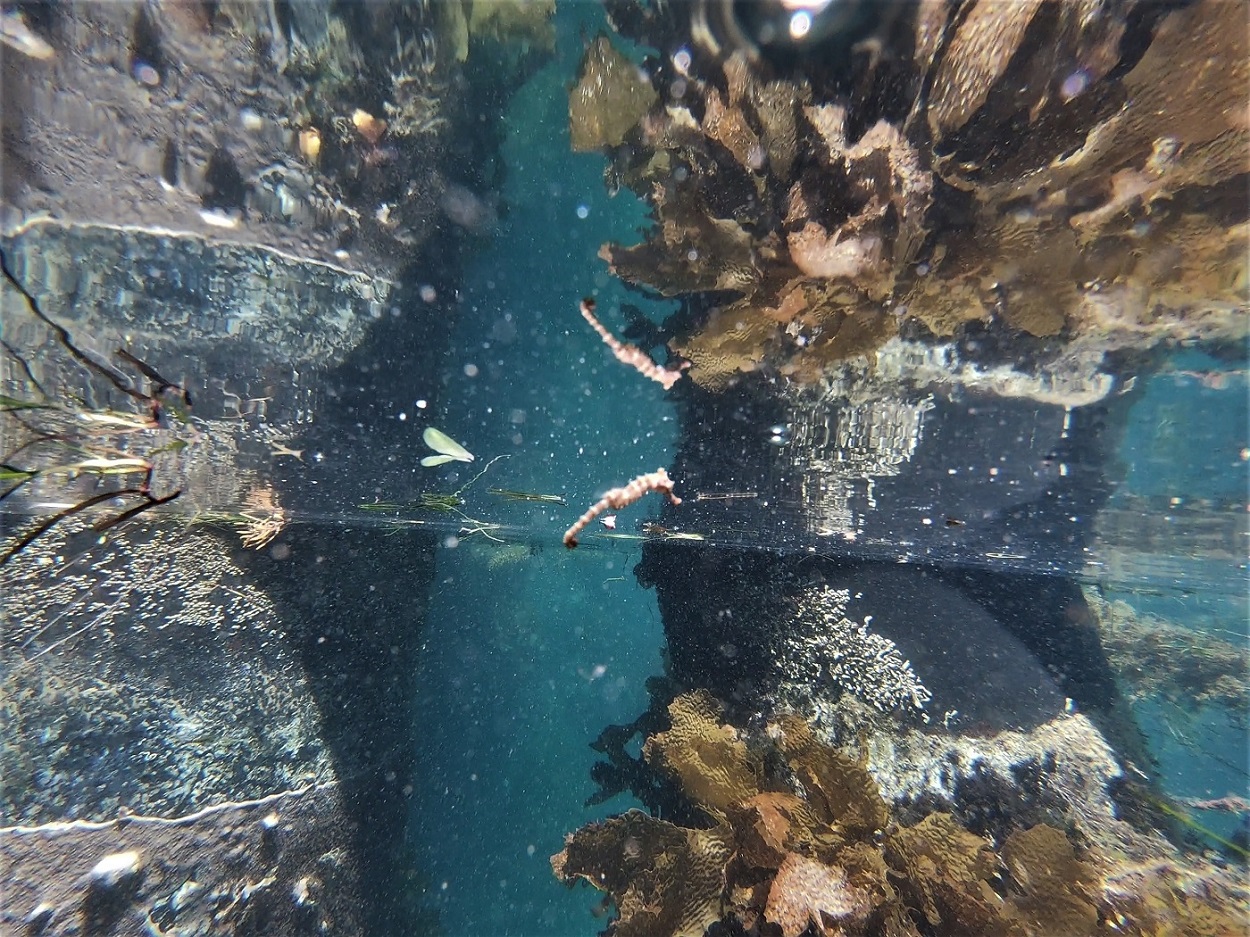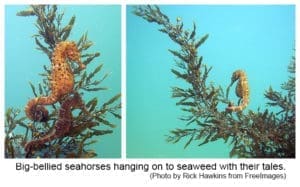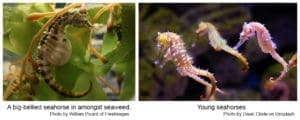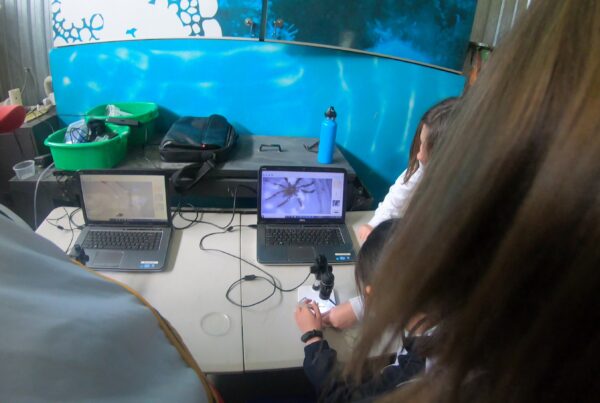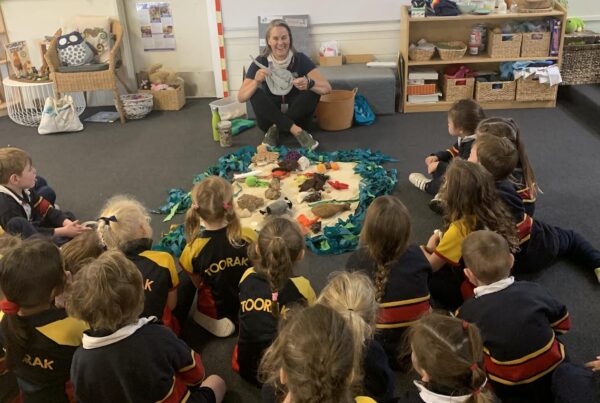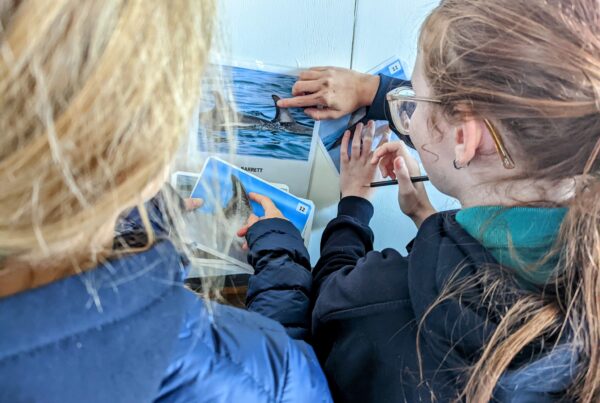Did you guess correctly? It looks a little bit like a horse, right?
In celebration of the New Year and fresh beginnings, this is a juvenile seahorse! A seahorse is a rather unusual fish, but a fish, nevertheless. Like all fish, they have a backbone, a swim bladder, they breathe using gills and swim using fins. But unlike other fish, they swim upright, lack scales and have a tail that can hold onto objects.
There are 43 species of seahorses in the world and the largest of them, the Pot-bellied or Big-bellied seahorse lives in Victoria. It can grow to around 35cm in length and is often seen around reefs and man-made structures, like piers. The other common seahorse in Victoria is the smaller short-headed seahorse which grows to around 80cm in length. All seahorses are protected animals in Victorian waters.
Seahorses rely on their ability to blend into their environment to survive. They swim slowly, trying not to attract the attention of predators, using the large fin on their back to swim forwards while steering with two smaller fins on their heads. To move up and down they adjust the air in their swim bladder, like other fish. Their hard body, made of bony interlocking plates covered in skin, provides protection from predators and their colours help them to hide amongst seaweed and sponges. They can wrap their tail around objects allowing them to rest and to feed. Seahorses feed like a vacuum cleaner, using their gills to generate suction to pull small crustaceans into their long snout. They have no teeth, instead, they swallow food whole. To watch out for prey and predators their eyes can move independently, so one can look in front while the other looks behind and the position of the eyes on their heads gives them almost a 360-degree view of the surroundings.
A unique feature of seahorses is that the males have a pouch which is used to carry the developing eggs. After a courtship dance, which may last several days, the female transfers her eggs into the male’s pouch, where he fertilizes them, and the eggs remain while they develop. This contrasts with most other fish that take no part in the egg’s development after it has been fertilized. After around a month the young are ready to leave, so with a series of contractions the male expels the 300 – 700 young from his pouch. While seahorse breed all year round, breeding peaks during the warmer months when the male may carry up to four broods. That may sound like a lot of seahorses but less than 0.5% of the juveniles survive to become adults.
The following short clips were filmed by our Eduction Team recently at Blairgowrie Yacht Squadron. The videos show juveniles of all different sizes drifting near the surface and one individual looking for seagrass to hook their tails on to, whilst another grabs onto a pipefish by mistake!
REMEMBER these creatures are VERY fragile, so if you are in the water when juveniles are present please be very careful with your hands and fins as they are very easy to dislodge, and some are so tiny they are very hard to see!
Here is another video of female transferring eggs to the male’s pouch and a male seahorse ejecting the hundreds of young that have developed in his pouch. Just amazing!
If you would like to learn more about seahorses and the huge diversity of life that can be found in the shallows along our local coastlines please contact Education Director Mandy Robertson on education@dolphinresearch.org.au

